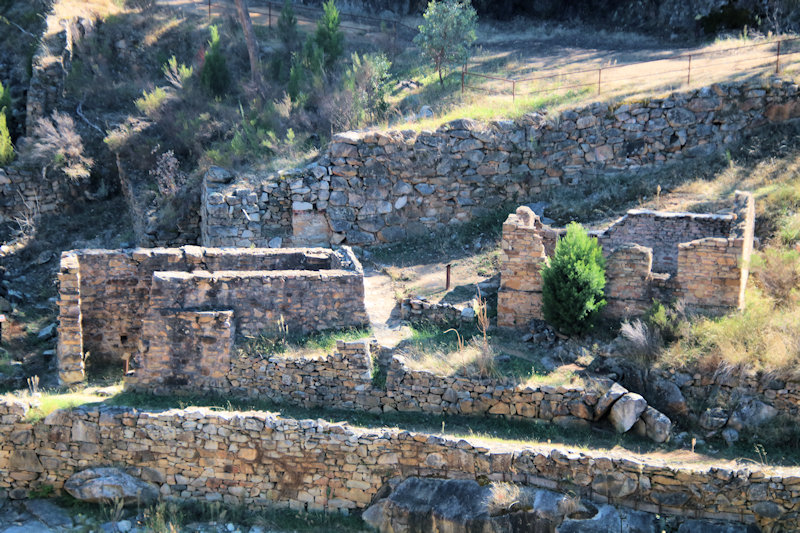The Adelong Falls Gold Mill Ruins, located 1.5 kilometres from Adelong and just over 20 kilometres from Tumut in New South Wales, are a reminder of Australia’s gold mining heritage. This state-listed heritage site offers a glimpse into the 19th-century gold rush era and the ingenuity of early mining operations.
Historical Overview
Gold was first discovered in the Adelong district in 1852, leading to the declaration of the Adelong gold field in 1855. By 1857, reef gold had been found in the surrounding hills, prompting the establishment of ore crushing mills along Adelong Creek to process the extracted ore. One of the most significant was the Reefer Battery, constructed in 1869 by Scottish partners David Wilson and William Ritchie. Utilizing the natural flow of Adelong Creek, the mill employed two water wheels to power its ore-crushing machinery. The design cleverly harnessed gravity to feed ore through the mill, maximising efficiency.
The Battery and associated processing works were designed to extract gold from its bearing ore by hydraulic separation and mercury attraction. The ore was crushed in a stamper battery until it was fine enough to be washed over mercury treated plates which attracted the gold particles.
Workers treated the tailings from this process in a Chilean Mill and sluiced them. They then ground the remaining tailings and passed them into a buddle, which used agitation to further separate the heavy metal. The site also included a furnace that separated the gold and mercury recovered during the first sluicing.
The Reefer Battery operated until 1914, processing ore from miners in Adelong and the wider district. Records indicate that approximately five tonnes of gold were sent to the Sydney Mint from this mill (from a total of 25 tonnes from the district), contributing significantly to the region’s prosperity during the gold rush era.
Getting To the Adelong Falls Gold Mill Ruins
You can drive directly to the carpark immediately above the ruins, or walk out and back from Adelong. This walk is around two kilometres and takes about 30 minutes each way. The carpark is large, with plenty of spaces, while the toilets are clean and modern.
What to Expect
Today, the Adelong Falls Gold Mill Ruins serve as an outdoor museum, preserving the remnants of this once-thriving industrial site. You can explore the stone ruins, including the remains of gold extraction process such as the water wheels and buddle. Interpretive signage throughout the site provides insights into the historical operations and the lives of those who worked there.
Facilities at the site include a car park, picnic area, and public toilets. A wheelchair-accessible viewing platform provides panoramic views of the gorge and ruins below, ensuring that visitors of all abilities can appreciate the site’s historical significance.
The site is in ruins, but these are stable and well maintained. In the early 1990s significant conservation works were undertaken on the extant remains, including the stabilisation of standing walls and the clearing of vegetation to attempt to regain the integrity of the original relationship of the site with the surrounding landscapes.
In addition to its historical and educational offerings, the site is a popular spot for recreational activities. During the warmer months, Adelong Falls becomes a favoured swimming hole, and the surrounding area is ideal for picnics and leisurely walks.








Our photos are available for purchase on
Other Places to Visit in New South Wales
To see what else there is to do in New South Wales, click here.

Leave a Reply